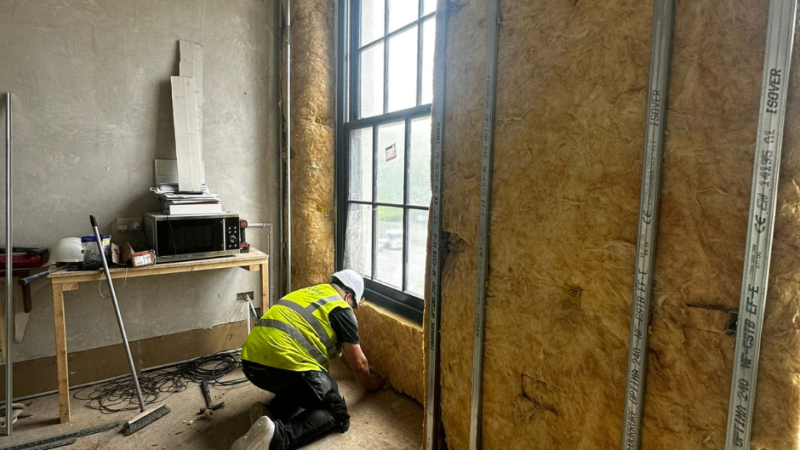Did you know Irish homeowners spend the most for electricity in Europe? As temperatures drop, many homeowners start wondering if their heating system and their budget can keep up. With energy prices still unpredictable and older homes struggling to hold onto heat, deep retrofitting has become one of the most effective long-term solutions for comfort and cost control.
But the big question remains:
How much can you actually save on heating bills after a deep retrofit?
Let’s break it down in a clear, realistic way.
What Is a Deep Retrofit and Why Does It Save So Much Money?
A deep retrofit tackles all the major areas where homes lose energy:
• Insulation (attic, cavity wall, external wall, floor)
• Airtightness improvements
• High-performance windows and doors
• Ventilation upgrades (typically demand-controlled or mechanical ventilation)
• Heating system replacement, often with a heat pump
• Smart controls & zoning
Instead of fixing one issue at a time, a deep retrofit improves the home as a whole system which is why the savings can be substantial.
Typical Energy Savings After a Deep Retrofit
While every home is different, many homeowners see reductions of 50–70% in their annual heating costs.
Here’s what contributes to that:
1. Insulation & Airtightness
Up to 35–40% of a home’s heat escapes through poor insulation and draughts.
After a deep retrofit, airtightness dramatically improves and insulation works the way it should meaning your home holds onto heat longer and needs far less energy to stay warm.
2. Heat Pumps
Replacing old oil or gas boilers with a heat pump can cut heating bills dramatically.
A well-installed heat pump can operate at 300%+ efficiency, compared to 70–85% for older boilers.
3. Ventilation that works with the home, not against it
Balanced ventilation systems recover heat, reduce moisture and improve indoor air quality without wasting energy.
4. Smart Heating Controls
Zoning, scheduling and individual room control ensure you only heat the spaces you’re actually using.
Before & After: What Homeowners Typically Experience
Before:
• Rooms that never feel warm
• Heating systems running constantly
• Rising heating bills each winter
• Cold floors, draughts, condensation, or mould
• Reliance on electric heaters or open fires
After:
• Even, consistent warmth throughout the home
• Significantly lower energy usage
• A dramatically reduced carbon footprint
• Better indoor air quality
• A quieter, more comfortable home
• A home energy rating often jumping from E/F/G up to A2–B2
Many homeowners say the biggest change is comfort with savings coming as a welcome bonus.
Realistic Example Scenarios
Detached 1980s home upgrading from oil to a full retrofit
• Before: €2,000–€2,500 per year in heating
• After: €800–€1,200 typical annual running costs
• Estimated savings: ~50–60%
Semi-detached 1990s home with poor insulation
• Before: €1,400 per year
• After: €500–€700 per year
• Estimated savings: ~50%
Bungalow retrofitted with external insulation + heat pump
• Before: €3,000+ per year for heat
• After: €1,000–€1,400 per year
• Estimated savings: ~55–65%
These are illustrative examples — but they reflect very common outcomes for homeowners who move from older heating systems to a full deep retrofit.
If you’re feeling the cold creeping in or watching your heating costs rise each winter, a deep retrofit is one of the smartest, most reliable ways to change the story for good.
You get a home that’s warmer, healthier, quieter and dramatically more energy-efficient and the savings continue year after year.
📞 Get in touch today or visit House2Home.ie today.

